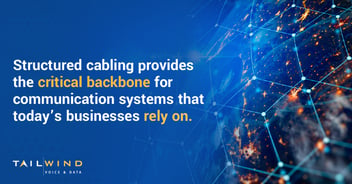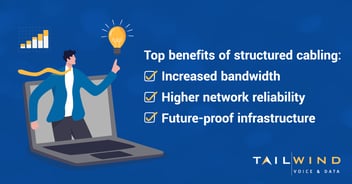Most enterprises pay a fair amount of attention to their IT out of necessity. With increasing demands on networks due to the widespread use of cloud services for, well, almost every business function, fast and efficient networking is a requirement, not a luxury. A lot of enterprises focus on mobility and wireless and may overlook a crucial component of their IT: the cabling that connects components to networks. Not all cabling is the same, and enterprises need to be strategic about the way they approach structured cabling when relocating branches or expanding to new locations.
Cabling is built to last, with the average lifespan being 15 years. This is a long time compared to the relatively short lifespans of most devices that will use the cabling. When planning a relocation of your business, keep cabling in mind. Whatever system you start with in your new location, your enterprise’s IT will be stuck with it for some time.
Ask yourself a few questions. Is the cabling maxed out or close to capacity with existing connections? Is the cabling layout the most efficient solution for enterprise connectivity? The answer requires an understanding of network cabling and your enterprise’s future needs.
Why Cabling Matters
Traditional cabling is point-to-point, where one network component is connected to the next in a daisy chain-like system. Here, we’re talking about data center cabling, with a system comprised of fiber cables that connect one switch, server, or storage unit to the next on the chain. In smaller applications, point-to-point cabling is adequate.
When there are a large number of connections, point-to-point cabling can quickly become cumbersome. We’ve all seen images of highly disorganized server rooms with patch cables all over the place, an example of cabling chaos. Point-to-point cabling chaos is not just an aesthetic problem, however. The multiple connections can be costly to maintain, which affects a business’s bottom line and productivity.
Structured Cabling Enables Continuous Data Flow & Less Chaos
Is there a better way to manage how different network components connect to and comprise your network? Structured cabling uses distribution areas, providing flexible, standards-based connections. With structured cabling, network components are directly connected to a communication backbone instead of to another component on the network.
Structured cabling adds flexibility and redundancy and reduces failures. Cables are related to nearly half of all data center outages. 29% of outages are traceable to failures in the uninterruptible power supply (UPS), and more problems result from cabling issues related to cooling, water damage, and other physical concerns. Using structured cabling and a communication backbone can greatly reduce these concerns while also minimizing costly downtime.
Other benefits of structured cabling include:
- Reduced repair time. Structured cabling is segregated into a group of devices connected to a single communication backbone — a local cabling panel. This system is easier for IT professionals to maintain, saving your business money and downtime.
- Future-proof. Structured cabling allows for change, which is crucial for future-facing businesses. By not binding data center hardware to a rigid framework geared to today’s technology alone, businesses can future-proof their network architecture.
Structured Cabling Expertise To Future-Proof Your Enterprise’s Move
Creating a network infrastructure plan is the key to realizing all of the benefits of structured cabling. It involves an assessment of current needs and projected needs based on growth, new technologies, and other factors. And, if you are looking to add structured cabling to your new location, you’ll need the guidance of a team of experts who can help assess, plan, implement, and manage the process.
At TailWind, we make successful IT happen, including structured cabling. We have the knowledge and experience to deliver effective enterprise-structured cabling projects. We fortify this expertise with our boot-on-the-ground support that lets you focus on your business and not your structured cabling. Does a structured cabling project for your new location seem daunting? Let TailWind help you start realizing the benefits of structured cabling. Contact us today for more information.


